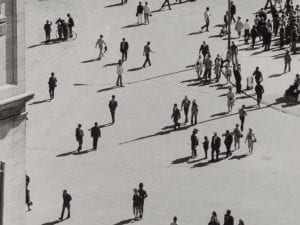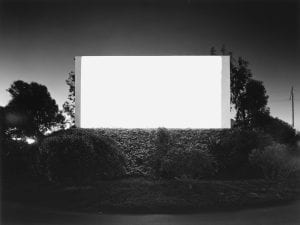Italian photographer Franco Fontana (b. 1933) is widely regarded as a master of colour. It’s easy to see why from his oeuvre of eye-catching cityscapes showing the bright buildings, tall skyscrapers and palm trees of Ibiza, Havana and Los Angeles. Here, rich shades of pink, orange, red and yellow pop against blue skies. Soaring buildings and skyscrapers appear flattened to look almost like paintings. It’s an iconic style of bold, geometric abstraction we’ve become familiar with through the sun-drenched work of Tropico Photo and George Byrne. Now, Atlas Gallery celebrates Fontana’s inspiring legacy in Franco Fontana: Urbani, a sweeping retrospective that honours the artist’s 90th birthday. The show features rare vintage prints, Polaroids and photo-collages spanning from 1965 to 2017 that focus on the beauty of the urban landscape.

Fontana dedicated himself to multi-chromatic image-making at a time when the style was often looked down upon. Many fine artists avoided colour because of its distinctive use within advertising and family souvenirs. It was seen as a technique that belonged either to a purely commercial application or a notably amateur world. Fontana rejected these views and fully embraced the style in the 1950s. He only ever shot a single roll of film in black and white as part of a commission from Ralph Gibson for his coral project Contact: Theory in 1979. The lens-based practitioner’s seven decade-long career has been an in-depth exploration of the nuances of colour across a variety of subject matters – from cityscapes to street scenes.


In Fontana’s compositions, the landscape is stripped back to its most essential shapes and lines. This is clearest in a piece titled Ibiza (2008). A wall of terracotta makes up the foreground, layered over one that follows a gradient from light to dark brown. Behind them, the sky and the ridge of a white building interlock. The simplicity of the forms encourages viewers to really pay attention to the subtleties of each hues as well as the ways in which texture and shadow impact each plane. At a first glance, the photograph could be mistaken for a painting or collage, reminiscent of 1960s Abstract Expressionism and Minimalism. These movements certainly influenced the artist’s career and are evident in his eye for balanced yet asymmetrical compositions, geometric line-play, forced perspective and a flattened depth of field.

“Delete to elect” is key to the photographer’s visual vocabulary. However, his decision to compress the depth of field actually arose from a technical issue. Fontana’s 50-millimetre lens could not select distant details, which meant he needed to frame a large portion of the visual field. He then enlarged and cropped areas of interest during the printing process. This results in subjective compositions where Fontana consciously subverts the way we are used to seeing the world. In reality, we might see a building standing out against the sky. Through Fontana’s lens, we see fragments of wall cut against stolen pieces of sky and sections of street. Objects near and far appear next to each other like parts of an abstract mosaic.


Colour is the undisputed protagonist of Fontana’s artwork. The use of asymmetry and geometry certainly grabs our attention, as we try to locate these unfamiliar views within recognisable city names. However, colour becomes a subject in its own right. It’s what pulls us into these photographs and what we take away after leaving the gallery. In an interview with Lisa Bernardini for La Voce di New York, Fontana discusses the distinction between mono and multi-chromatic image making. He concludes: “Colour must be seen not as an objective fact but as a subjective element. I view colour as if it were an identity. And for me it consequently represents the joy of living: if you remove the colour from life, you remove everything.”
Atlas Gallery, Franco Fontana: Urbani | Until 4 May
Words: Diana Bestwish Tetteh
Image Credits:
- Franco Fontana, Los Angeles, 1990. Image Courtesy of the Artist.
- Franco Fontana, Ibiza, 2008. Image Courtesy of the Artist.
- Franco Fontana, Los Angeles, 1990. Image Courtesy of the Artist.
- Franco Fontana, Ibiza, 1992. Image Courtesy of the Artist.
- Franco Fontana, Ibiza, 2008. Image Courtesy of the Artist.
- Franco Fontana, Los Angeles, 1990. Image Courtesy of the Artist.
- Franco Fontana, Los Angeles, (Vertical), 1991. Image Courtesy of the Artist.





